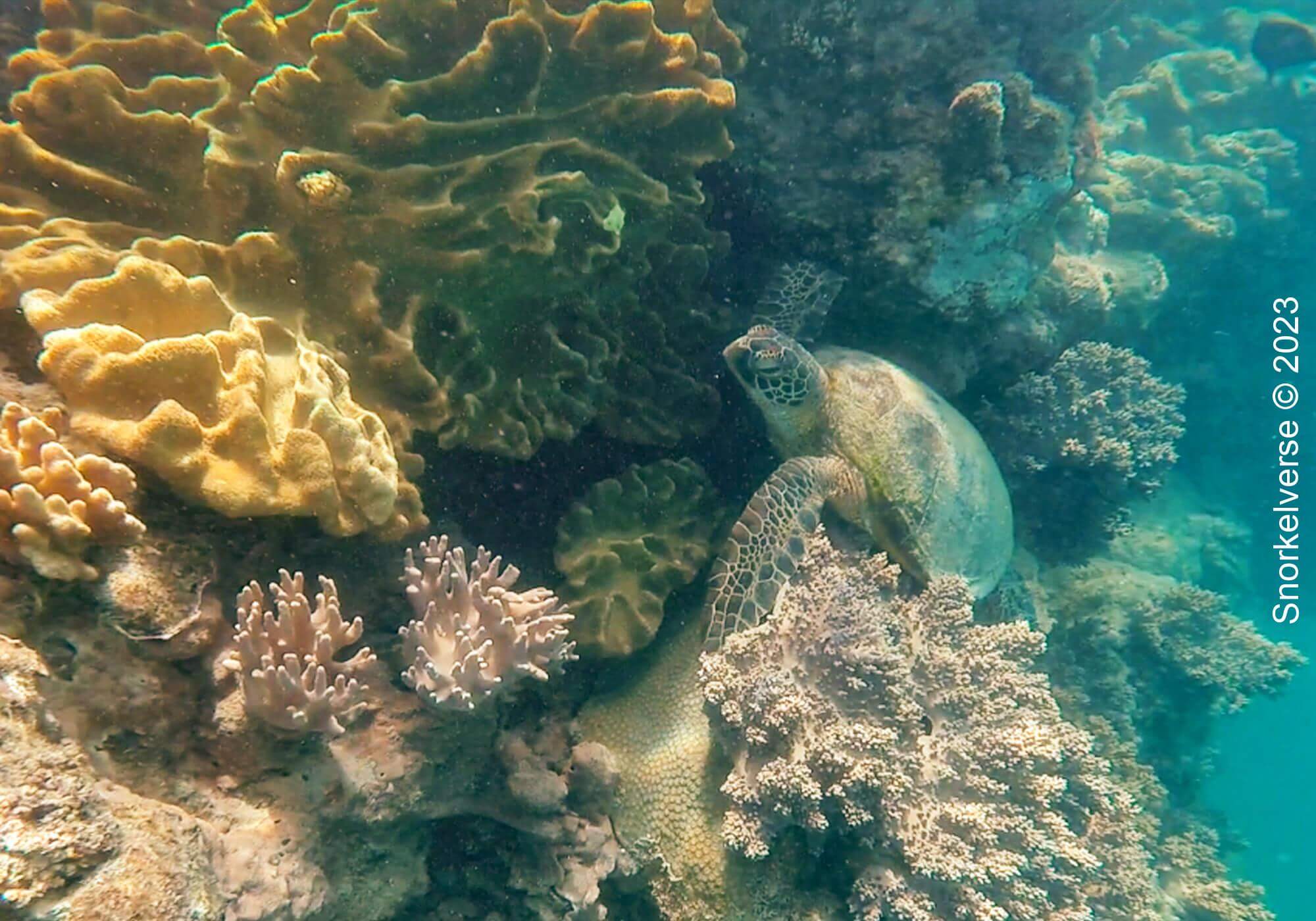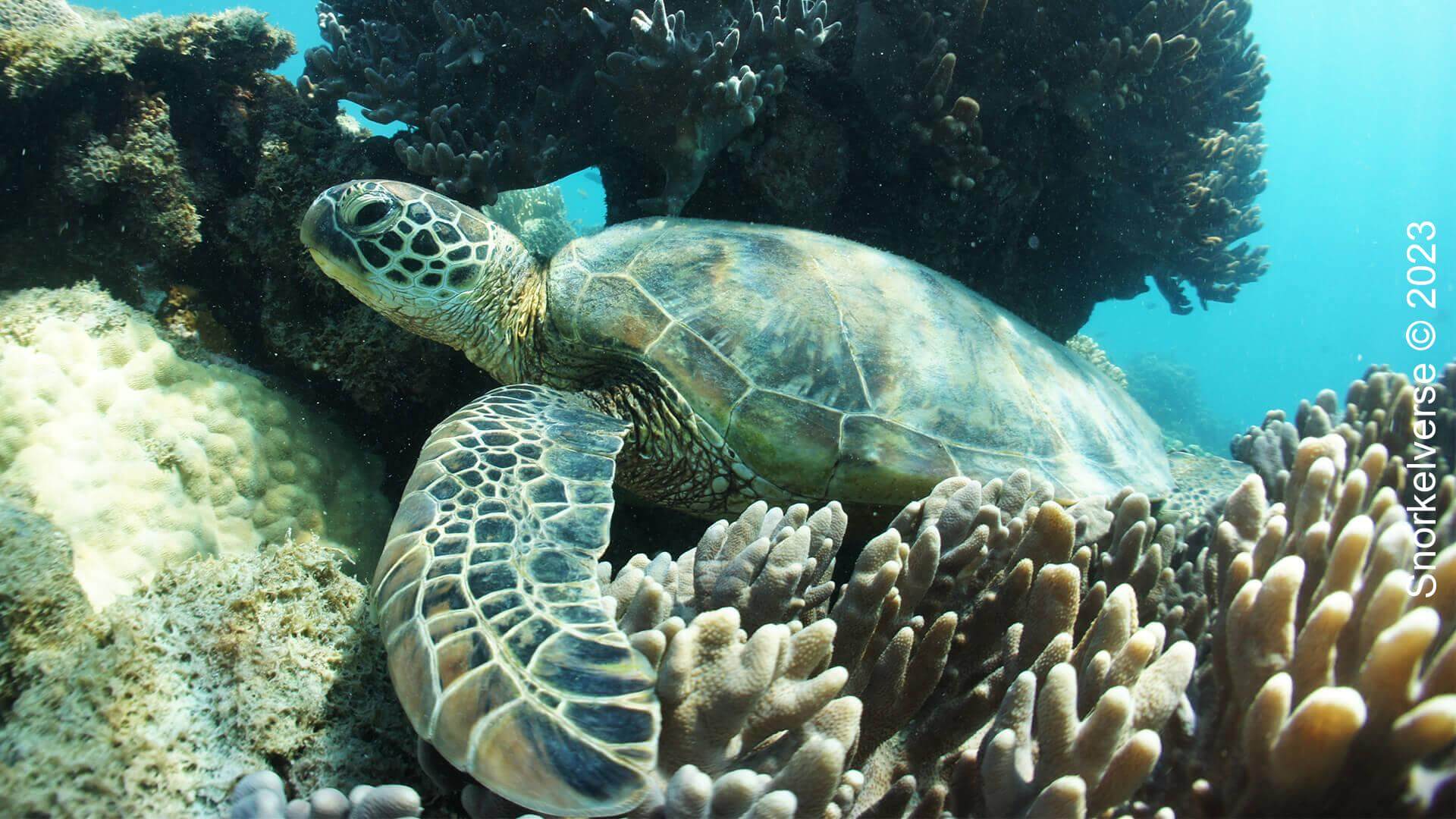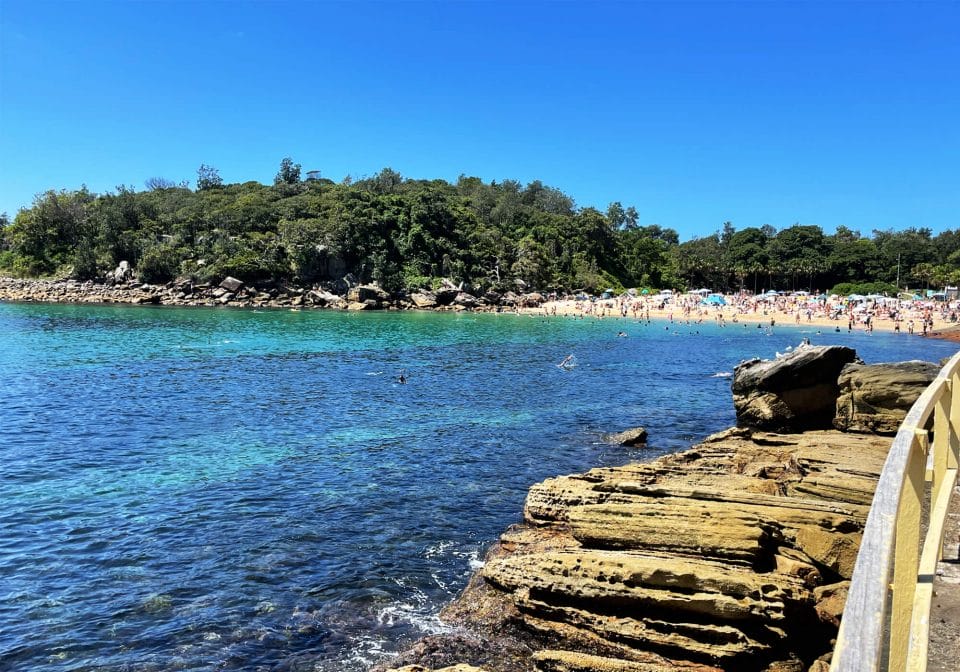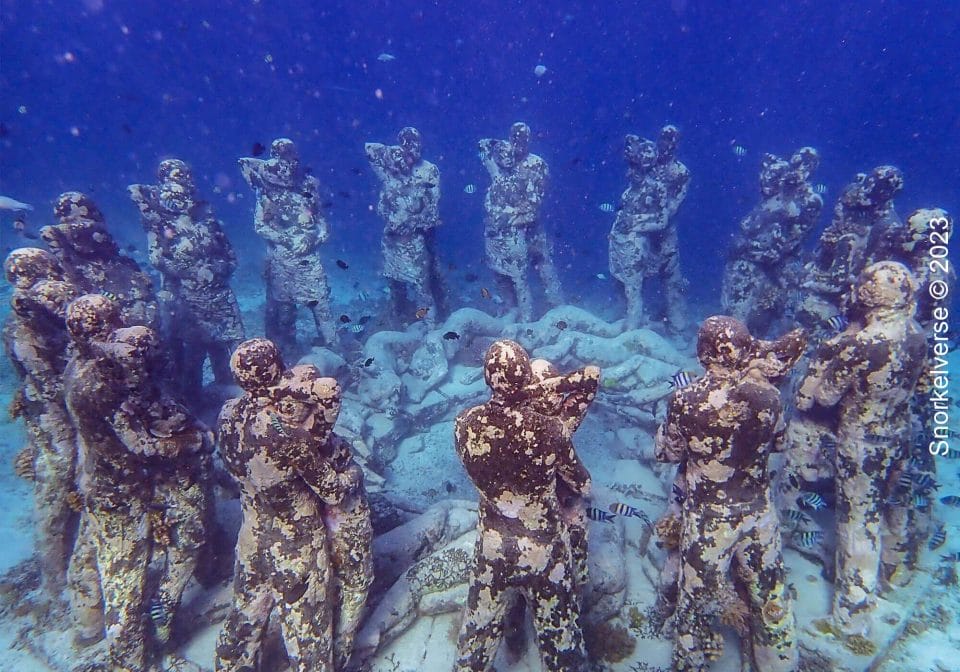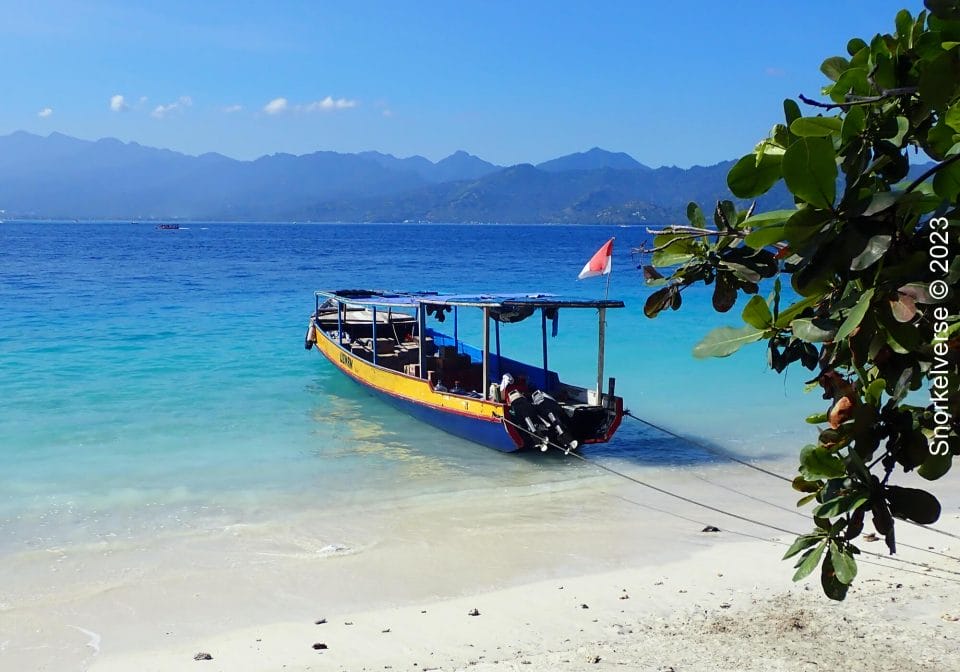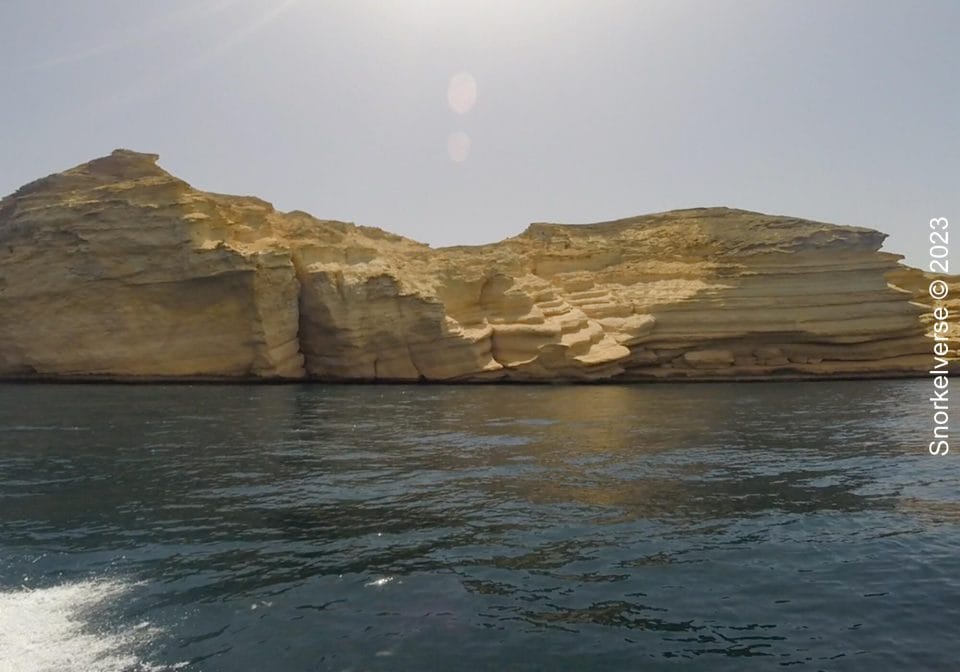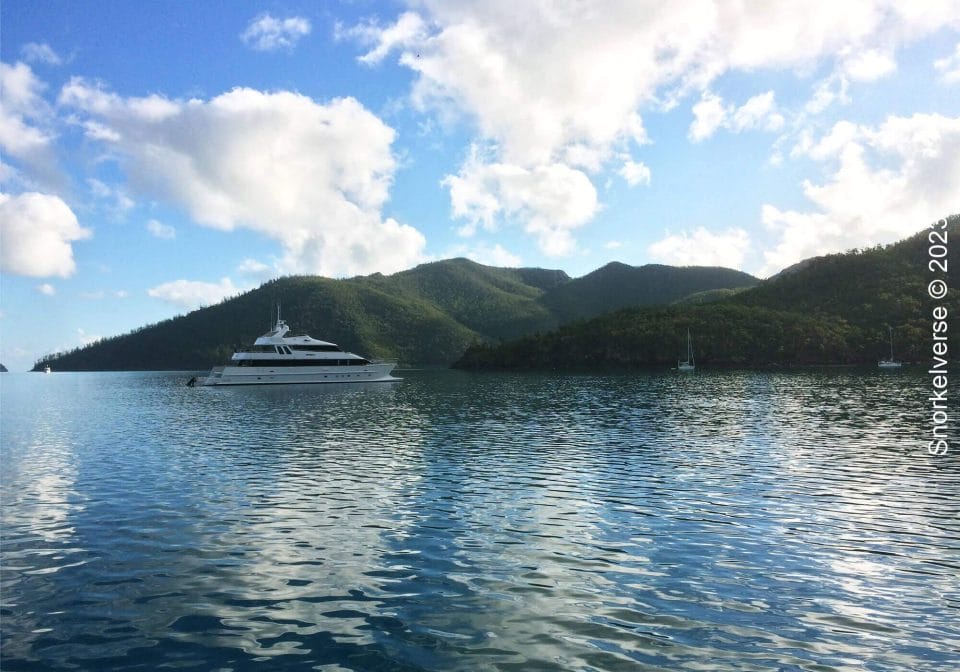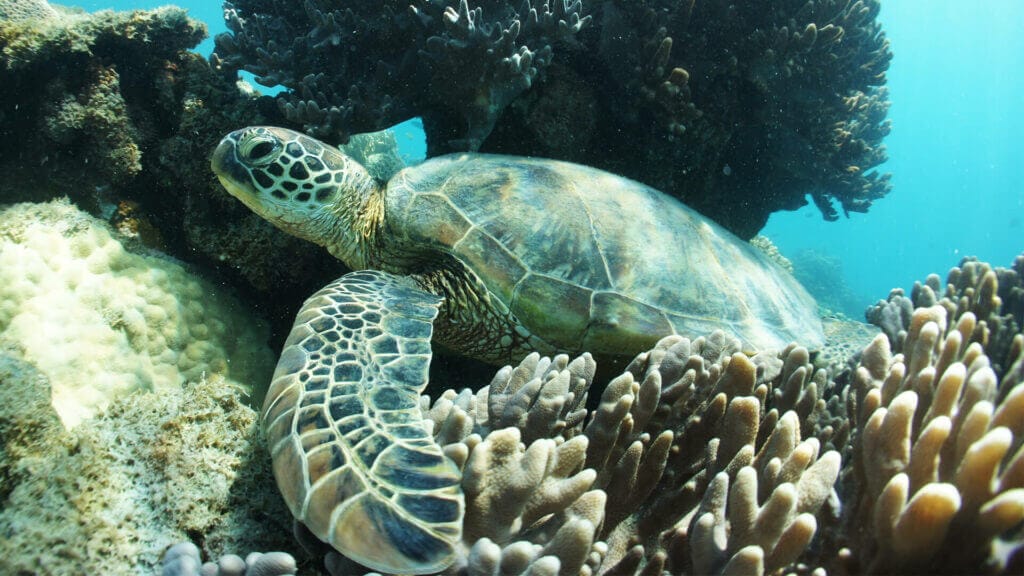

Description
The Green Turtle (Chelonia mydas) is one of the largest turtle species in the ocean. Named ‘Green’ Turtle for the green color of fat underneath its shell and not for the shell color itself. They are the largest hard-shelled member of Sea Turtles, growing up to approximately 90cm – 120cm in size. Their diet consists of sea grass and algae, which they eat off the coral reef with their beak-like mouth.

Snorkeling Video

Fact Sheet

Habitat
Green turtles live in warm water tropical and sub-tropical climates along the equator worldwide. Found around coral reefs eating on sea grass and algae, they can be seen out at sea when traveling vast distances to nesting beaches.
Diet
Diet consists of sea grass and algae, which they eat off the coral reefs with their beak-like mouths. They have a specialised jaw which allows them to feed on hard fibrous plants. Their mouth-line is serrated to allow them to chew vegetation. Green Turtles grow up as omnivores and are the only herbivores in the Sea turtle species.

Appearance
They are named for the green color of fat located under their shell, not for the shell color itself. It is the largest hard-shelled member of the Sea Turtle species, growing up to approximately 90cm – 120cm in size. They have a streamlined body, two large flippers for swimming, and a hard-shell for protection against predators.
Key Features
- Most recognizable for its large-scaled green shell.
- Two distinctive paddles with noticeable scales engraved.
- They can often have algae and barnacles attached to their shell.

Threats
IUCN Conservation Status: Endangered
Disease
Green Turtles can be affected by a disease called fibropapilloma, which causes external tumor growths which can affect eating, vision, and swimming. The tumors are typically found around soft skin, the neck, and close to the eyes.
Climate Change
They are affected by the ocean and land changes caused by climate change, including sea rise impacting nesting beaches. Increasing beach sand temperatures can cause only females to be born. Depleting coral reefs also directly affect food source and availability.
Fishing / Poaching
Illegal poaching of eggs and turtles, entanglement in fishing nets, and bycatch in fishing gear threaten these creatures.
Loss Of Habitat
Coastal developments are destroying and polluting beaches where turtles nest and lay eggs. This is a direct threat to the turtles reproduction as females return to the same beaches to lay their eggs.

Frequently Asked Questions
Adults eat sea grass and algae off the coral reefs, which they eat with their beak-like mouths.
Adults can grow over 1m long and weigh approximately 150kg.
Green Turtles are not aggressive unless threatened. But take precautions, and do not corner or threaten.


